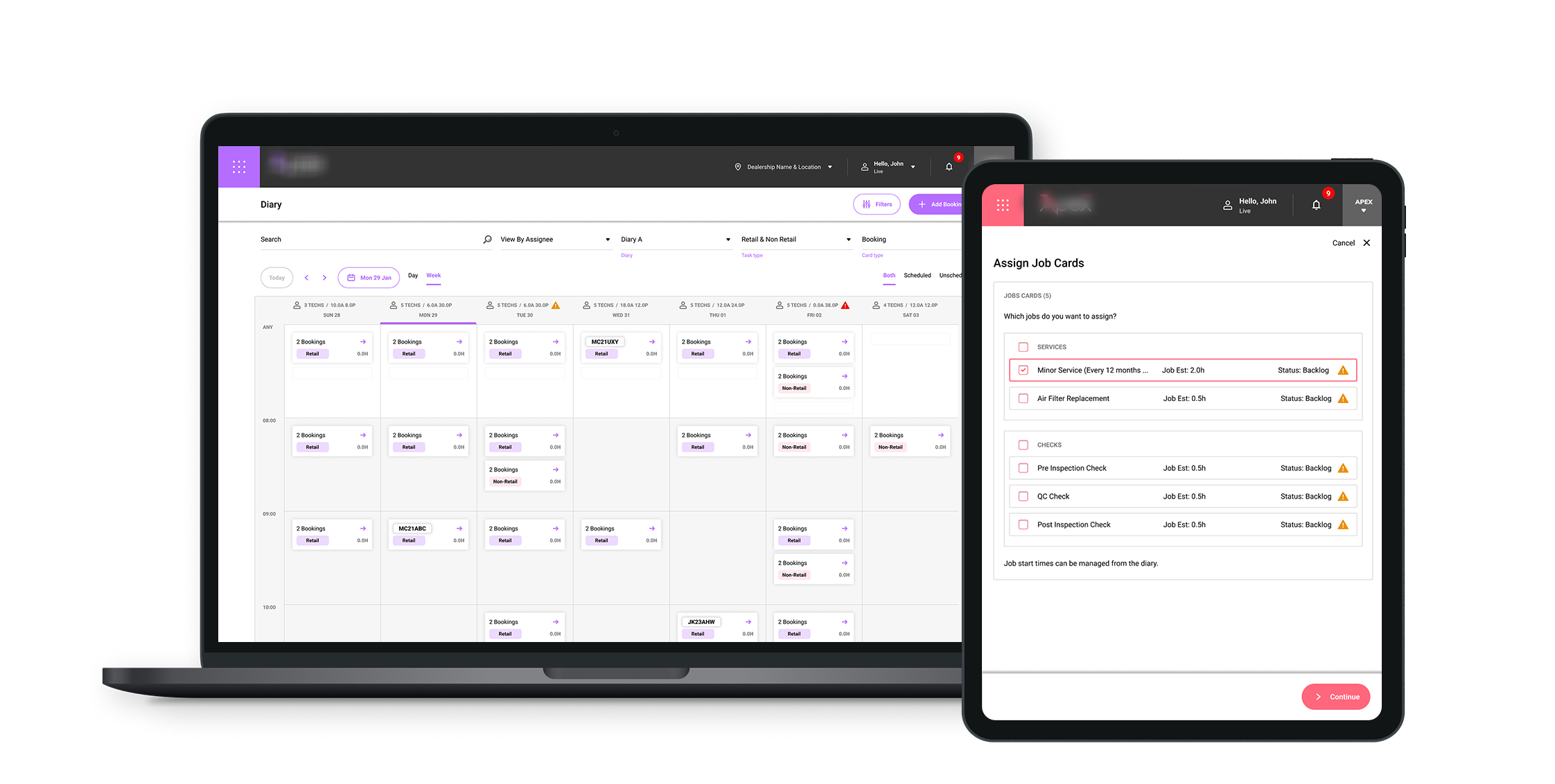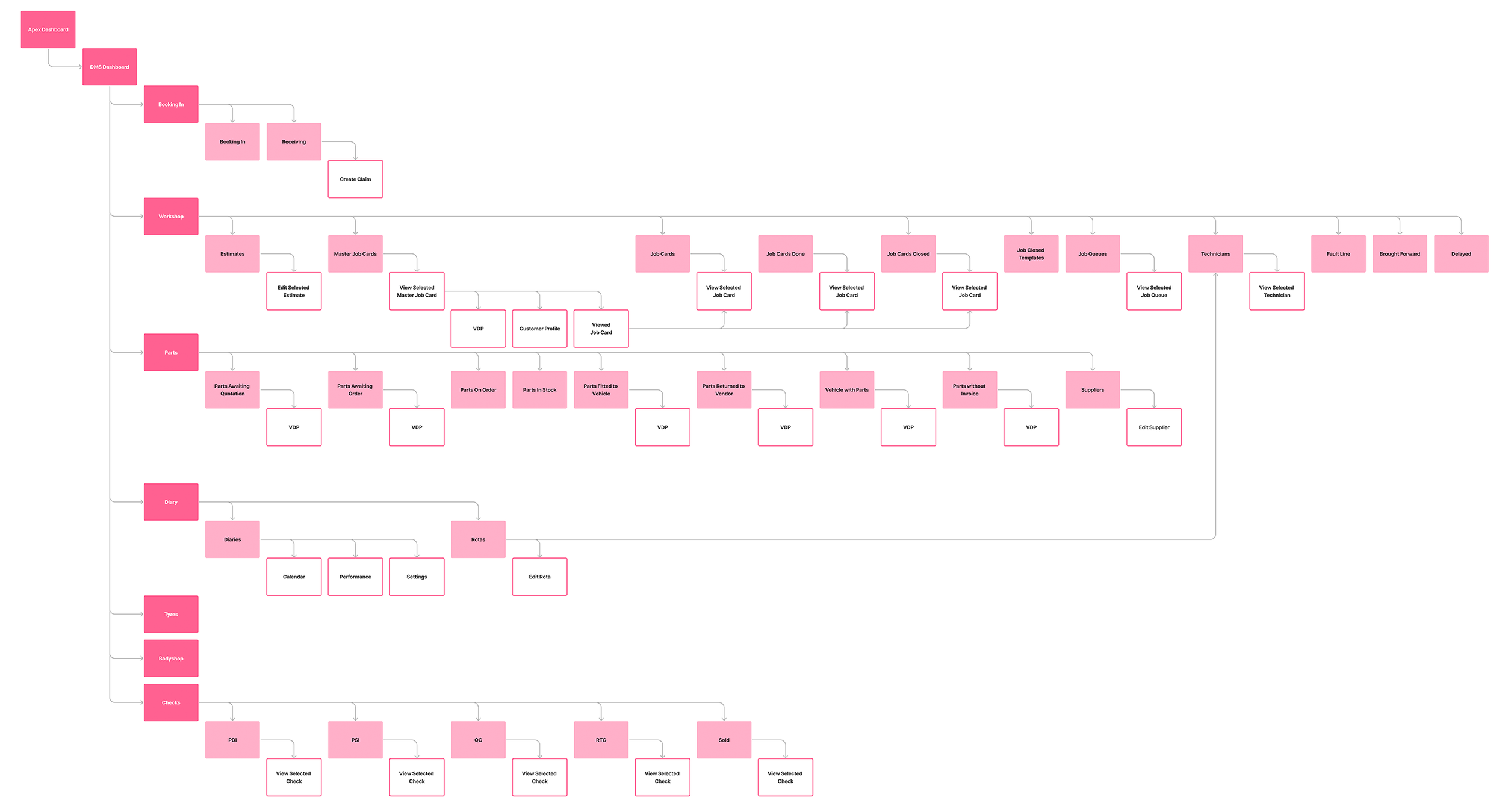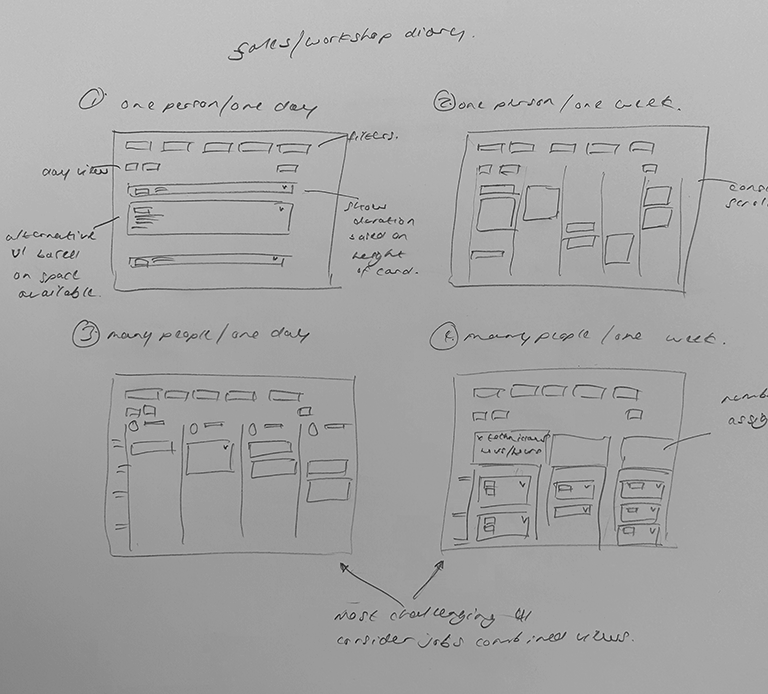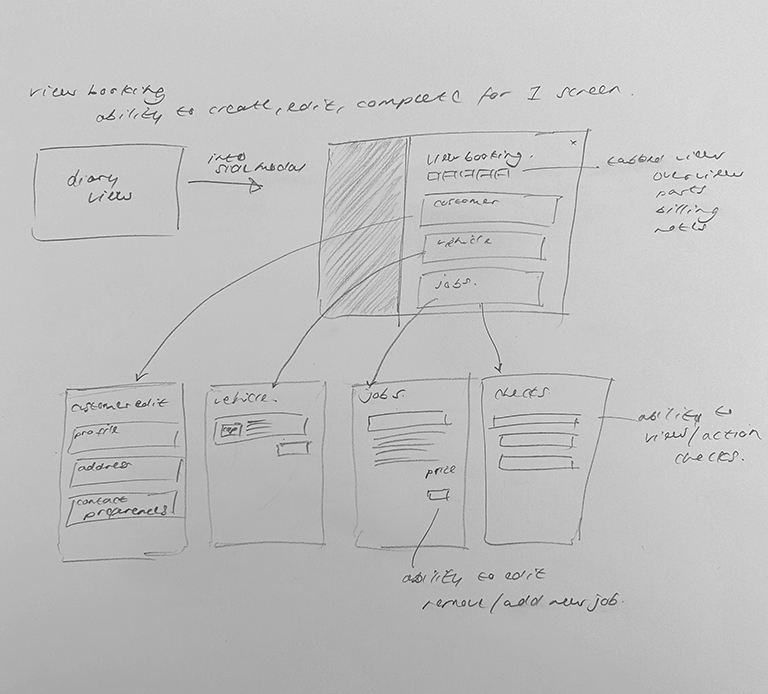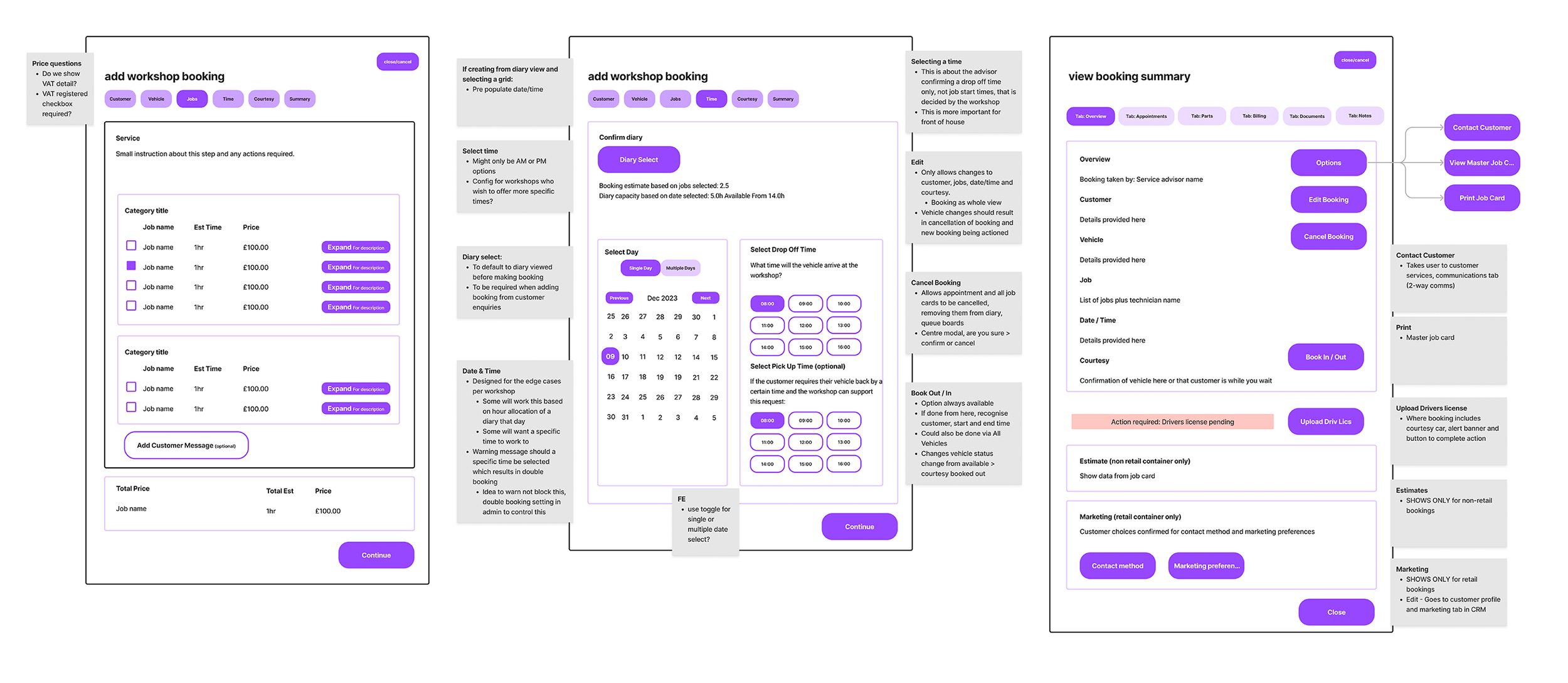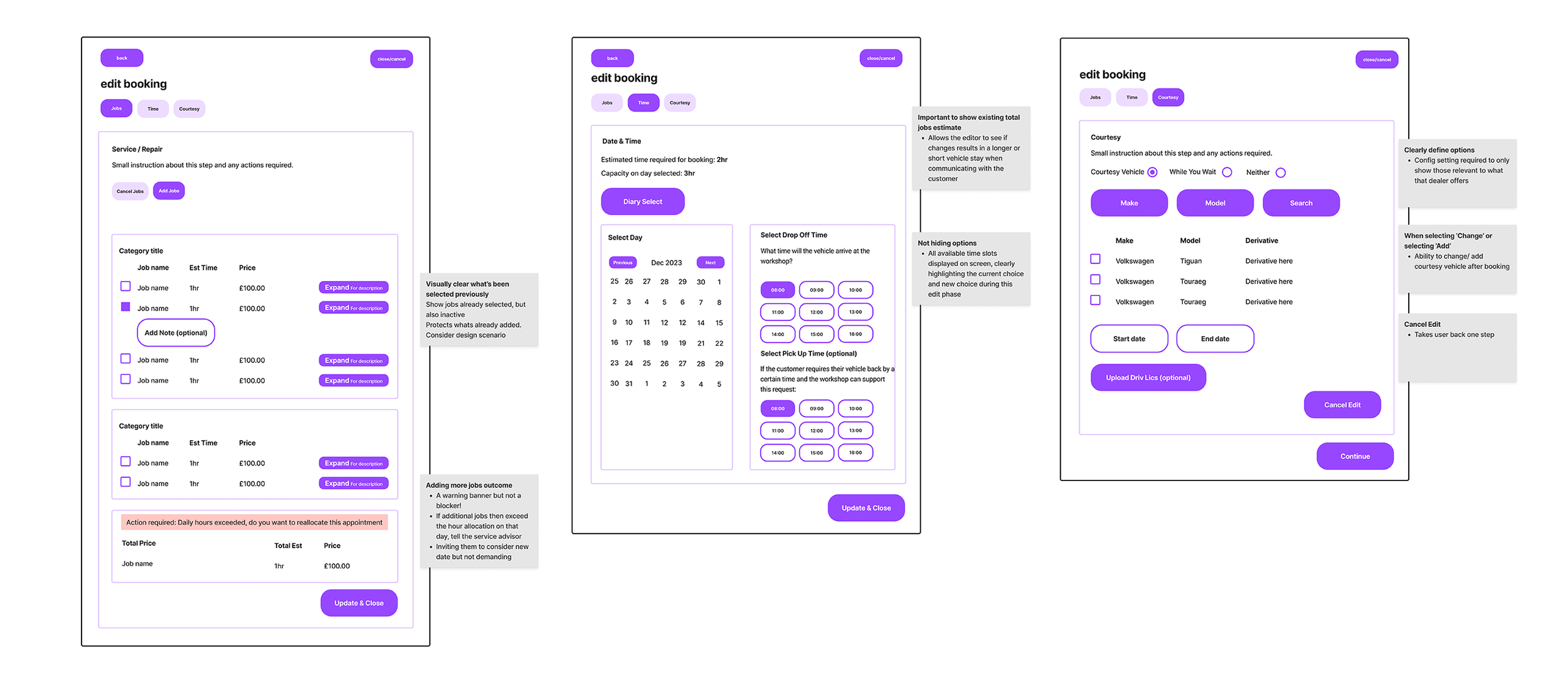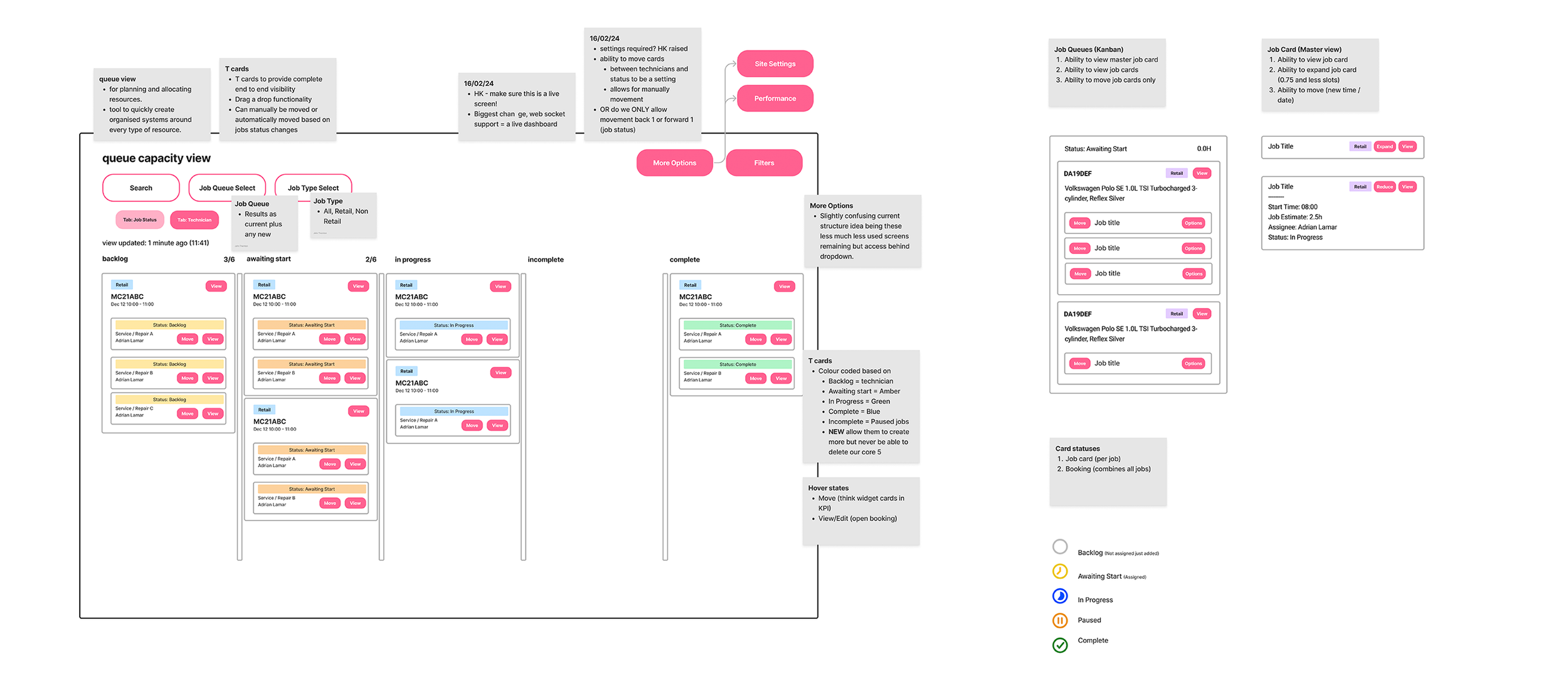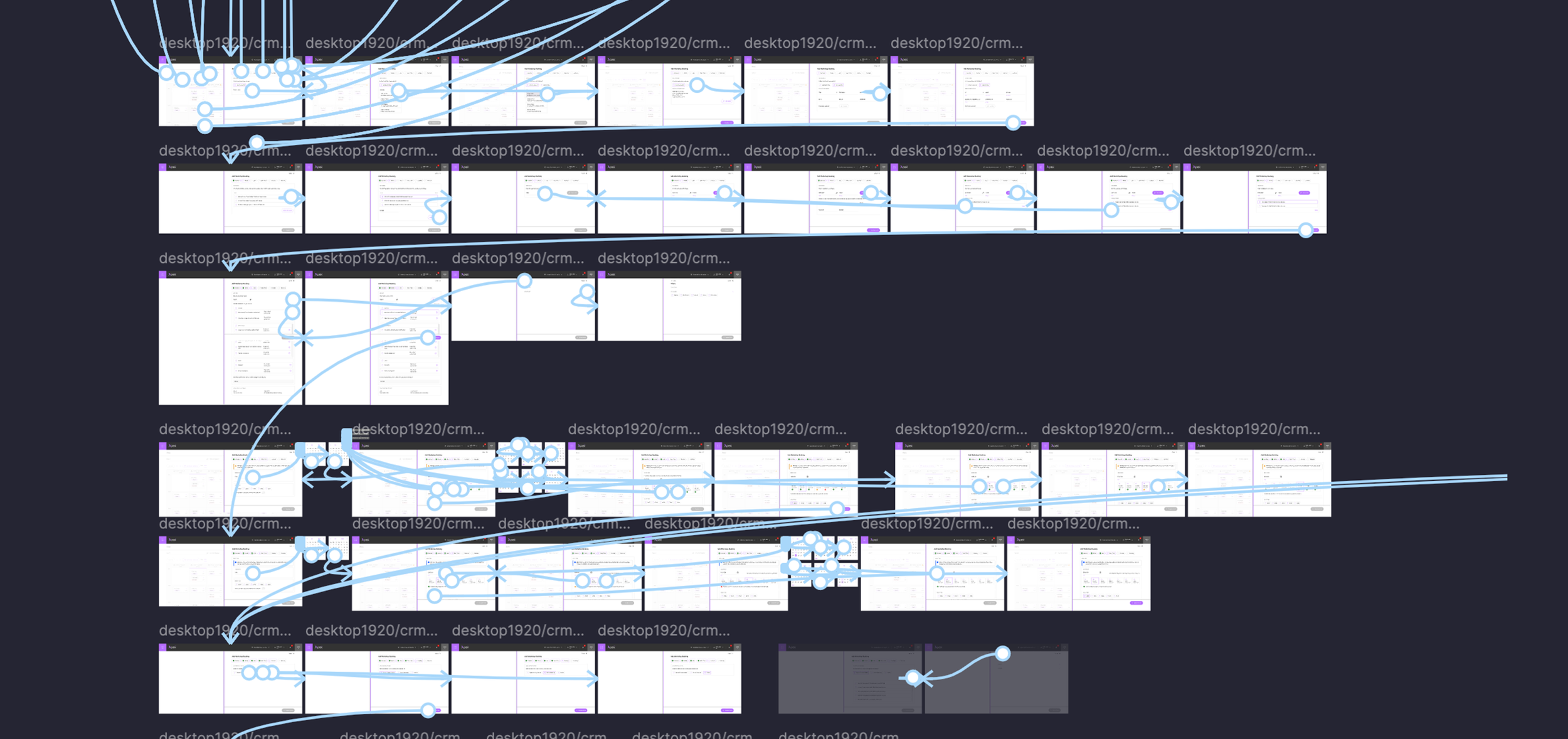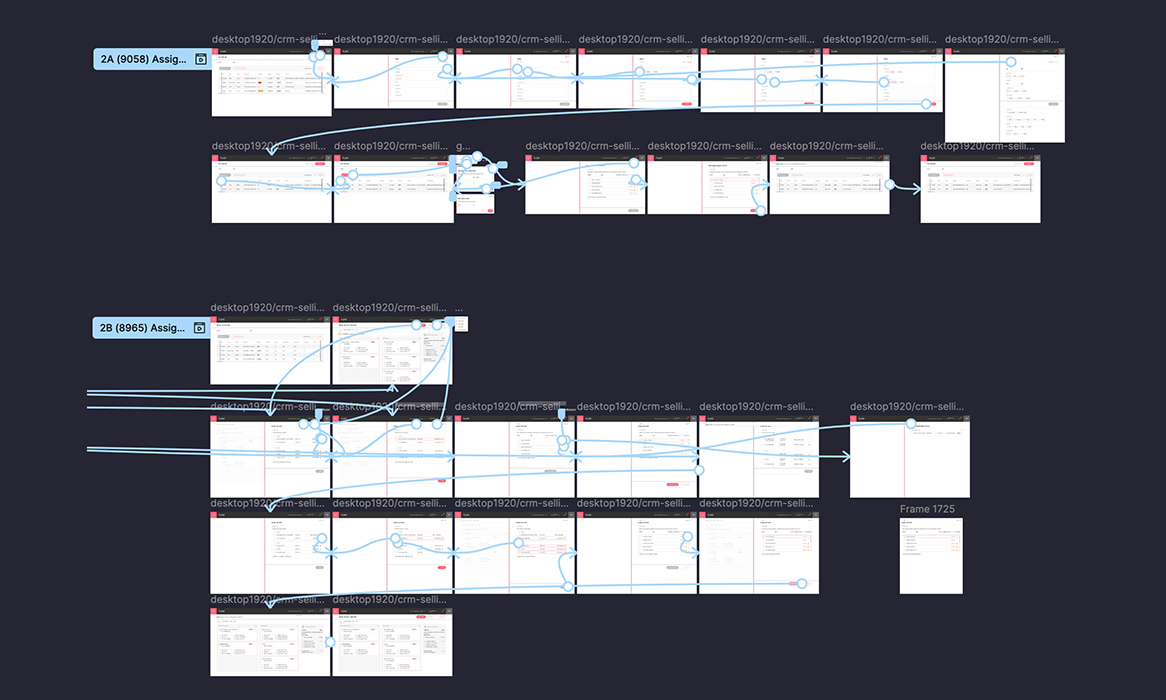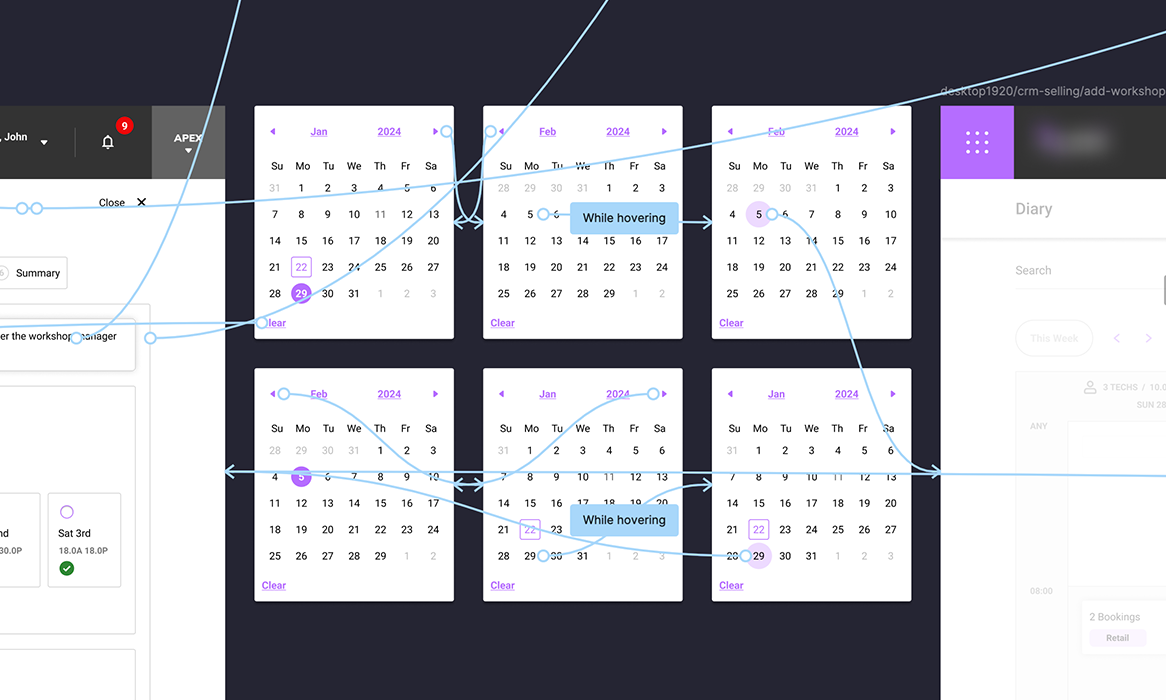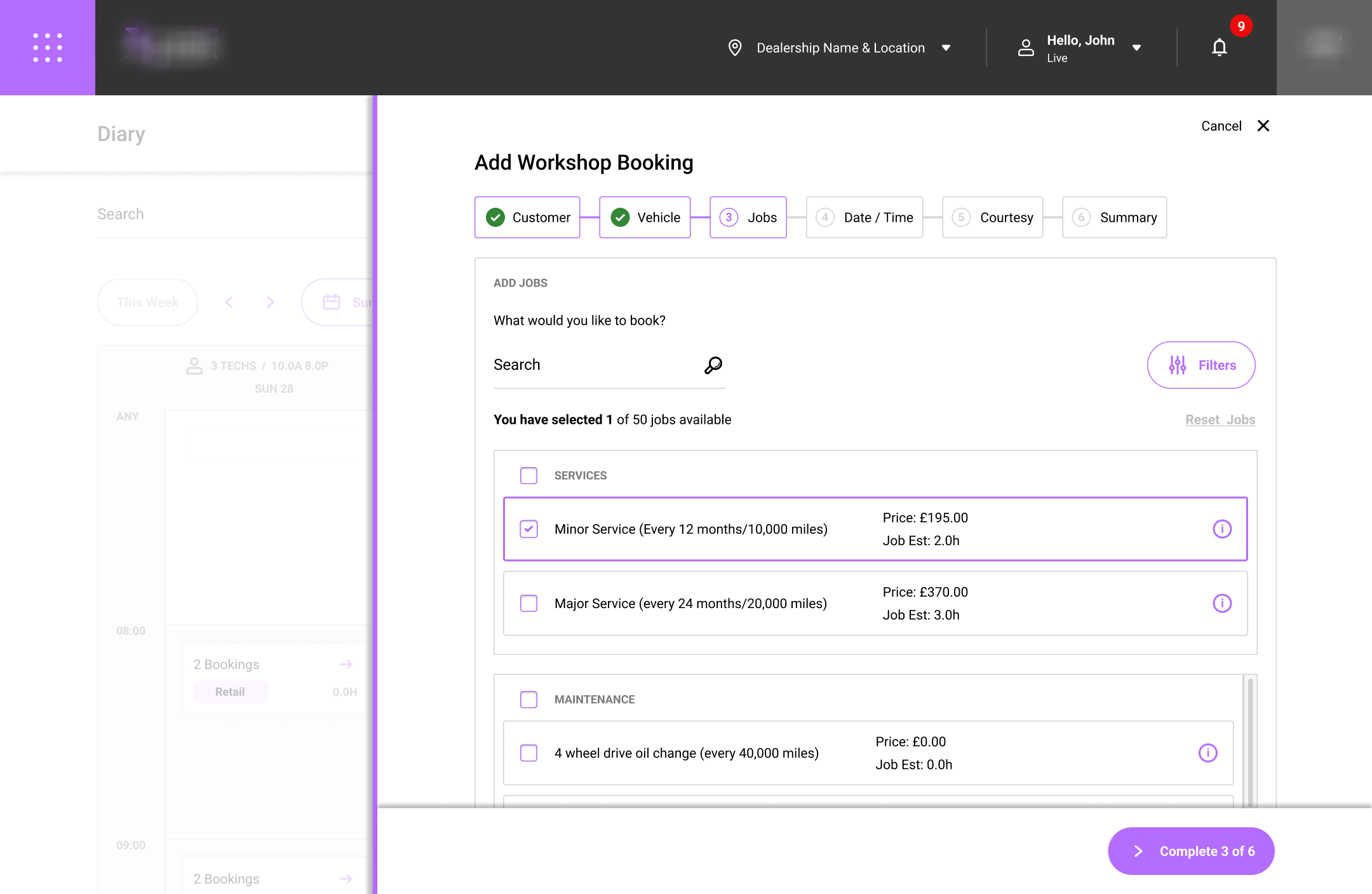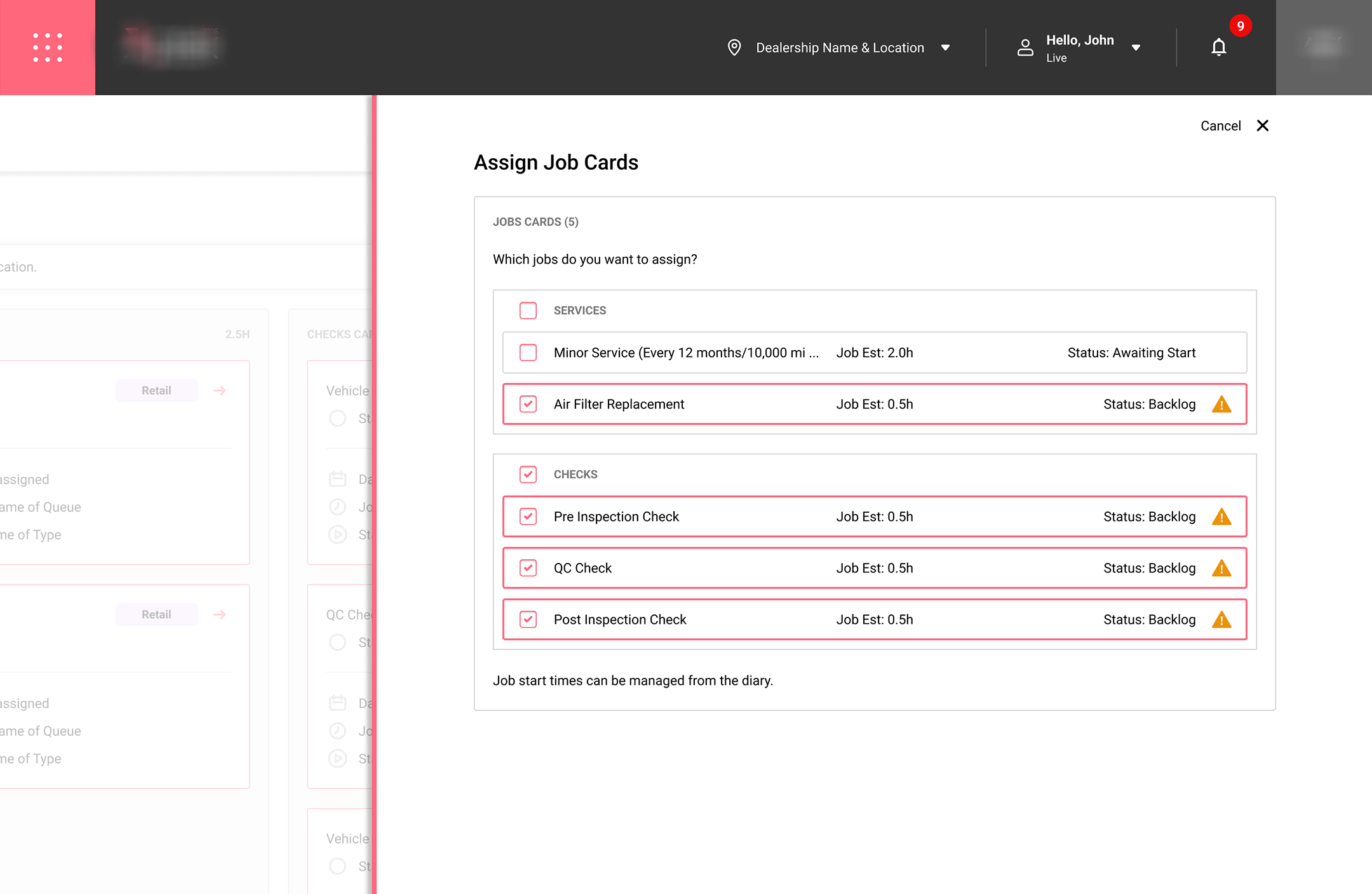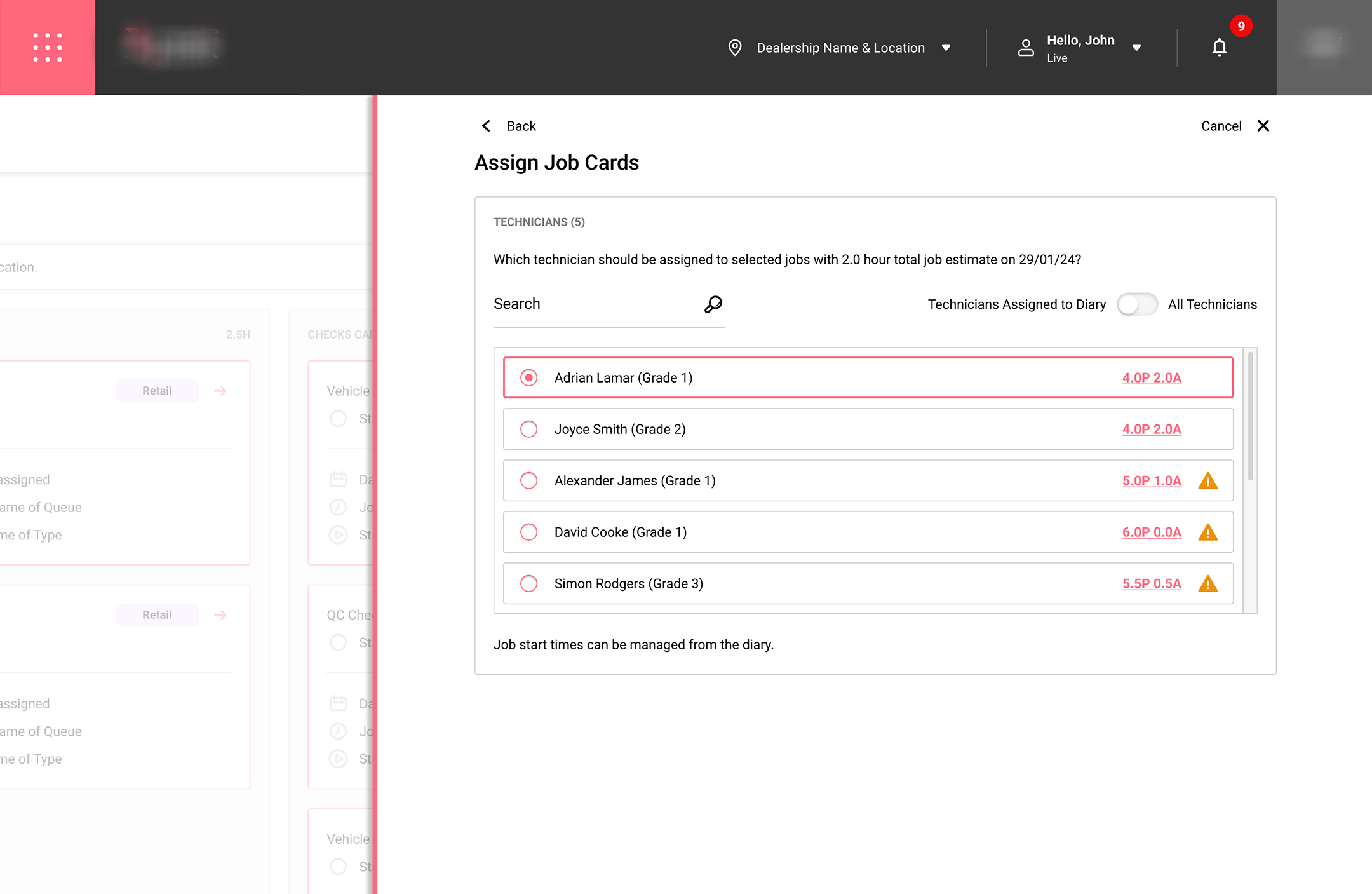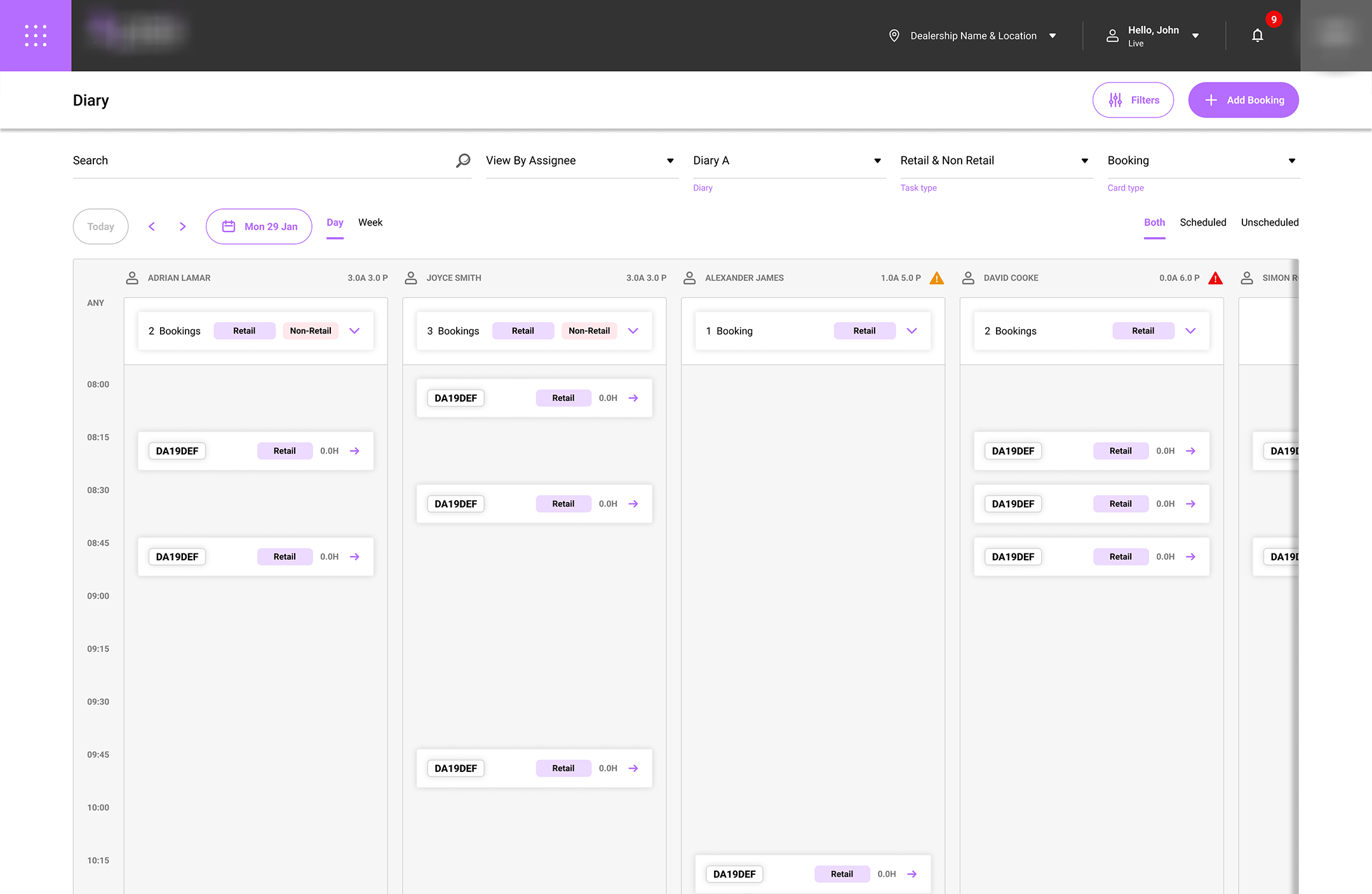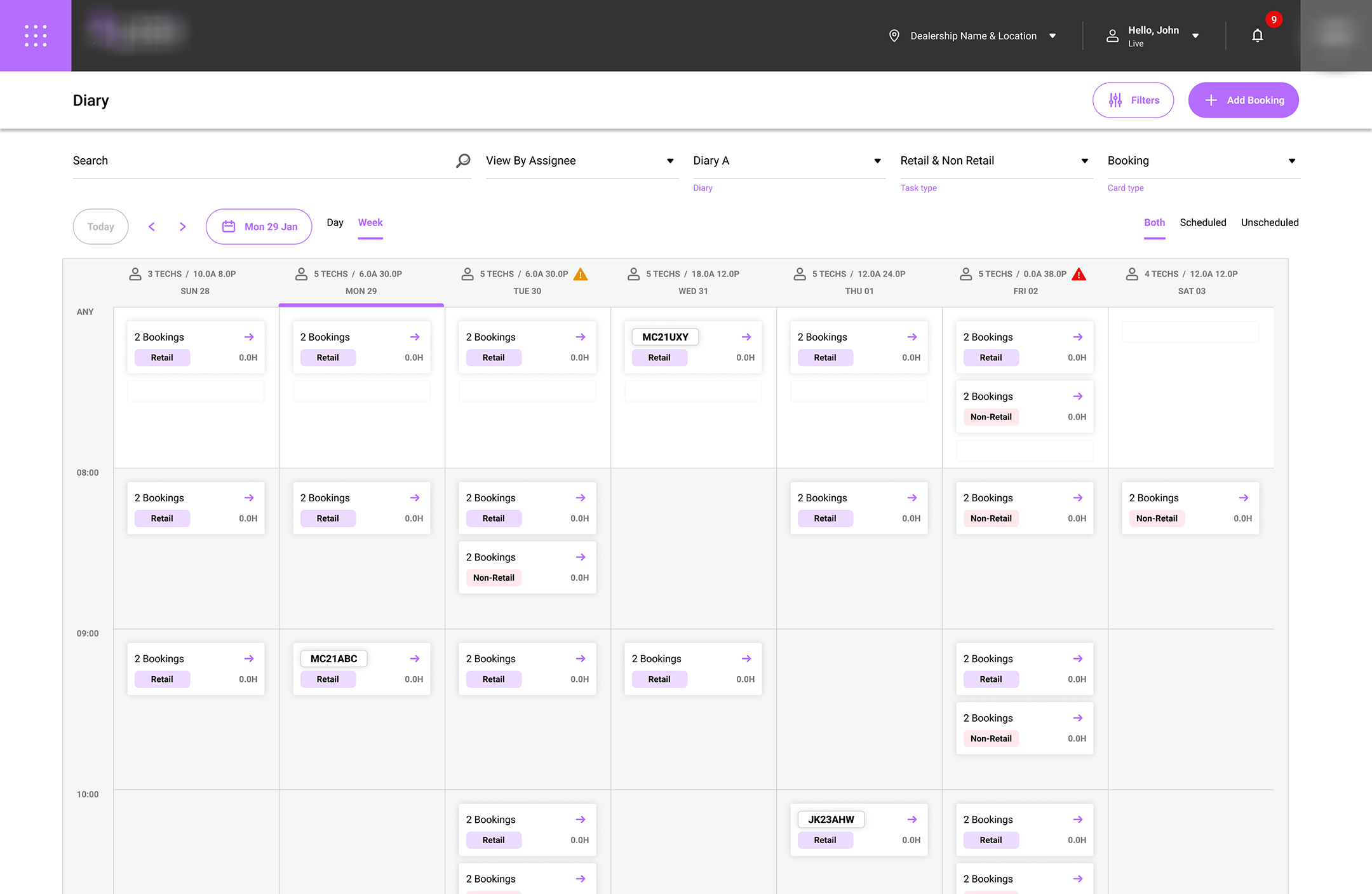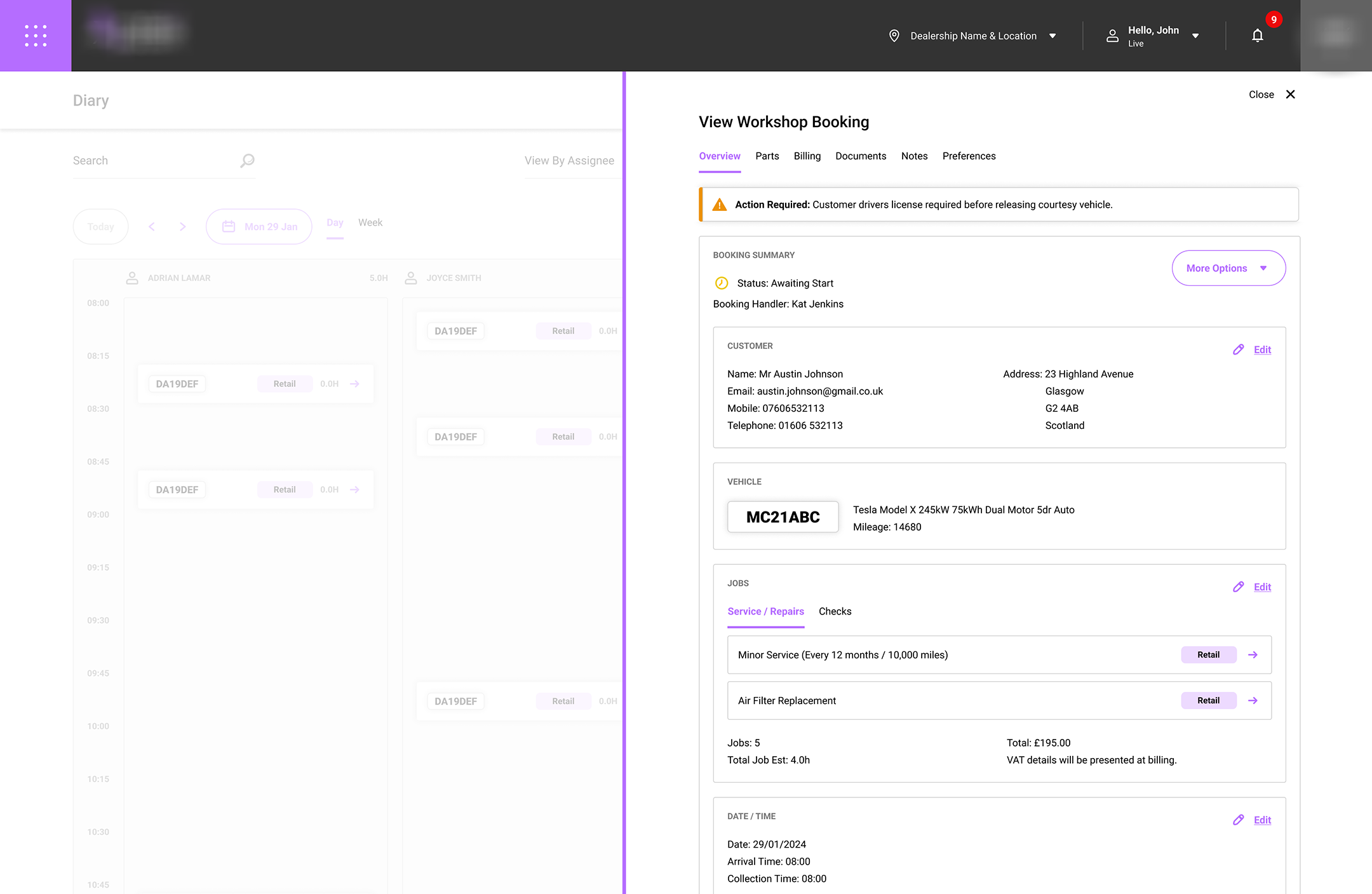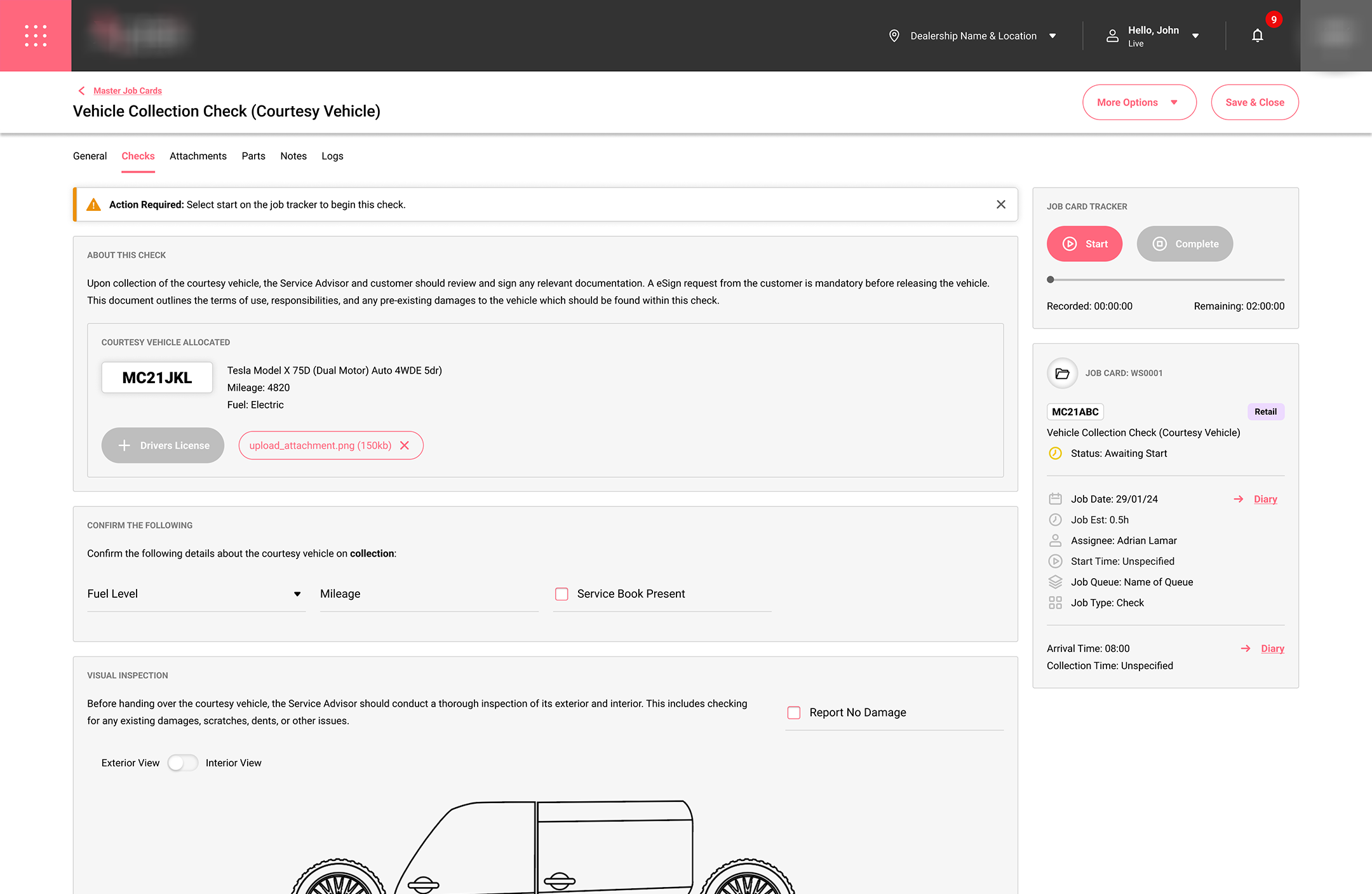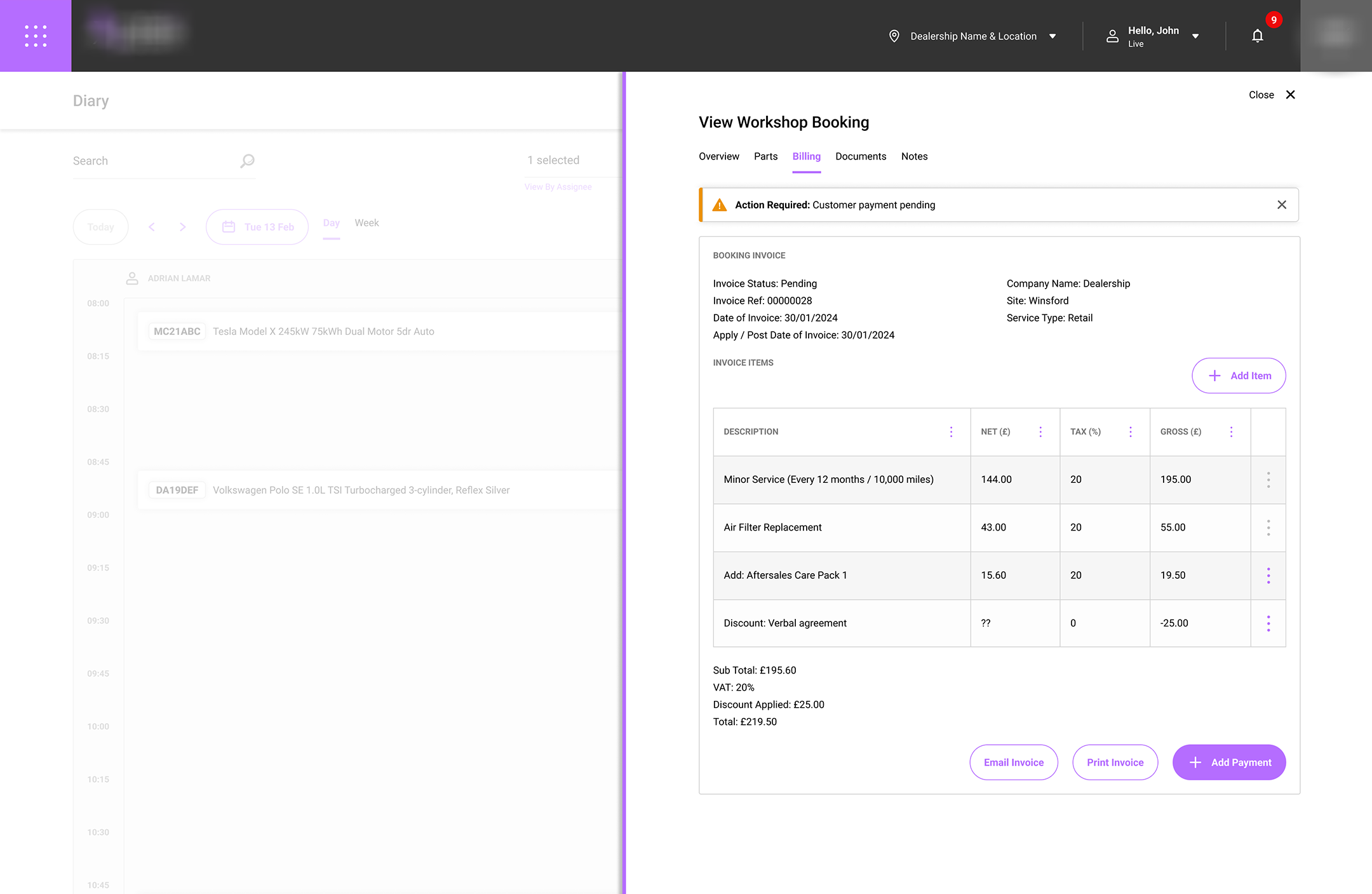Case Study 04
CRM/DMS Workshop Booking Solution For Retail Customers (SaaS)
My Role: Designer, Researcher, Project Manager
Team: Design, Front-end Engineer, Back-end Engineer
Duration: 3 months
01 The Brief
02 Empatise
03 Define
04 Ideation
05 Design
The Brief
The existing software is excellent at managing dealer-owned vehicles, known as non retail workshop bookings. However but it wasn’t designed to handle retail bookings yet and the stakeholder now wants it too.
My Contribution
Create new opportunities for dealerships to engage retail customers, allowing them to schedule workshop visits—whether they are returning customers or visiting for the first time.
Design a seamless dealer-facing experience for service advisors to book new customers efficiently.
Improve workshop scheduling with enhanced diary visibility.
Provide a dedicated view for technicians and managers to manage and monitor bookings.
Streamline job card and resource management with an integrated TCard system.
By developing this solution, we expanded dealership reach to new customers while enhancing the functionality and value of our software.
EMPATHISE
Conducting User Interviews
To learn more about workshops in a dealership environment, I visited a multi franchise used car dealership and a single franchise new car dealership who both share interest in our plans for a retail booking solution.
During 2-hour interviews, I shared over 50 categorised questions to understand the current workshop processes, roles, and responsibilities. This helped identify process gaps, manual tasks that could be digitised and those that should remain manual.
“Leveraging quantitative data to uncover user needs and inform design.”
EMPATHISE
User Insights and Feature Expectations
The user interview were able o summaries the main user frustrations:
Online Booking: No retail booking system exists; the team wants online booking with live availability and service options.
Technician & Job Management: Jobs are manually assigned; a system is needed to match jobs with technician skills and availability.
Job Card Tracking: Job cards are passed manually; digitisation is needed for better tracking.
Software Limitations: Lack of visibility and functionality; improvements needed in scheduling, parts status, and technician allocation.
Technician Availability: A system is needed to track availability and balance workloads efficiently.
Customer Communication: Automate reminders and confirmations to reduce manual follow-ups and improve satisfaction.
EMPATHISE
The Outcome
I reviewed user feedback and mapped their current workshop process flows to visually represent their input and described workflows. I then compared these flows to identify opportunities for integrating a single retail booking functionality into both, considering how users interact with our software.
`Showing only part of a larger flow illustrating the retail booking process from a single franchise new car dealership.
DEFINE
Software Requirements & User Story
As part of this project, I collected user stories and requirements through interviews, surveys, and group discussions. These insights defined the key needs and features for the dashboard solution, ensuring it aligns with user goals and expectations.
Workshop (Team Check-in 1 of 3)
Given the scale of this project, it was crucial to regularly check in with lead developers, stakeholders, and the product owner to ensure that the direction remained aligned with the original plan. These regular touch points lead to a more efficient, effective, and harmonious project process, benefiting the entire team and helping to ensure the project's success.
IDEATION
Part 1 of 3: Identifying a New Retail Process
The following user flows focus on the user role type, user action, the decisions user will make and the screens they interact with. I broke this down into a 5-stage milestone process, starting with a new customer booking request and ending with the customer’s vehicle being ready for collection after service.
1. New Booking Request
User Groups: Service Advisors, Call Centre, Reception
Screens: CRM Diary, CRM Leads
Aim: To add new retail bookings into the workshop, whether source is walk in, phone call or online.
2. Workshop Review Before Vehicle Arrival
User Groups: Technicians, Workshop Controllers
Screens: DMS Master Job Cards, DMS Job Cards
Aim: To assign Technicians to job cards before the vehicle arrives. To recognise parts might need to be ordered before vehicle arrives.
3. Customer Arrives
User Groups: Service Advisor, Receptionist
Screens: CRM Diary, DMS Job Cards
Aim: To collect vehicle from customer. | To complete any pre checks before handover (workshop process specific). | To hand over to workshop. | To collect drivers license and supply courtesy vehicle (if requested).
4. Vehicle in Workshop
User Groups: Technicians, Service Advisor
Screens: DMS Master Job Cards | DMS Job Cards | CRM Diary
Aim: For Technicians to complete job cards assigned to them. | To raise any new parts required during a service or check type job card. | To share any updates with customer during service.
5. Vehicle Ready For Customer
User Groups: Service Advisor
Screens: DMS Job Cards | CRM Diary
Aim: For workshop to complete all jobs assigned to them and hand back to front of house. | To notify customer vehicle is ready for collection. | To complete any pre checks before handover. | To update an courtesy vehicles included. | To take payment and complete booking.
Example of process 2: The part of a larger process flow illustrates the start of the second core process journey, where the workshop is first notified and reviews before vehicle arrival.
IDEATION
Part 2 of 3: Process Flow Mapping
Next, I identified which existing non-retail booking screens would need to change and what additional functionality was required to support both the new retail booking experience and the current non-retail process. By mapping the user's journey through different screens, I was able to pinpoint the core user flows.
There are multiple flows, some new and some existing but modified, spanning across 3 solutions, CRM, DMS and Admin.
IDEATION
Part 3 of 3: Adapting the Sitemap
I created two product site maps: the first visually representing the current structure, and the second illustrating how it will adapt. This helped me further determine how the new retail booking process could integrate into the existing solution.
Workshop (Team Check-in 2 of 3)
After the ideation phase, I organised another check-in to present initial ideas, along with user flows, process maps, and site maps, showing how the concepts were evolving.
DESIGN
Sketching
Before wire framing and during brainstorming or workshop discussions, sketching ideas can be the difference between a good idea and a great one. It’s important to capture ‘a brainwave’ whenever they happen.
Multiple diary views which can present limited results and maximum results as well with complete consistency.
View booking, a one screen management concept.
Master job card views, all the functionality a technician needs within the workshop.
DESIGN
Wire Framing
Low-fidelity wireframes help me plan the layout and arrangement of interface elements for retail booking systems. After establishing our framework, we proceeded to create wireframes to visualise the layout of each screen. This approach enabled us to swiftly outline various user pathways without delving deeply into the visual design of those screens.
I prefer using low-fidelity wireframes because they allow for faster presentation of ideas, focusing on structure and functionality without getting caught up in visual details too early.
Add booking screens, some of the core screens from a new multi step process designed to collect only mandatory information.
Edit booking screens, deign to mirror the create booking experience but with alternative instruction and states to current and new selects.
Master job card and assign job cards view. This is were a Master Technician will review, approve, amend and assign jobs.
The workshop Kanban Board was designed with a focus on displaying a large amount of data clearly and efficiently.
Job cards, designed to show as grouped and single jobs with default, hover, focus and complete states planned.
"Low-fidelity wireframes offer quicker idea presentation and encourage more candid feedback from stakeholders."
Workshop (Team Check-in 3 of 3)
The wireframes were then shared individually with lead product developers, stakeholders and the product owner. These wireframes illustrate how my understanding of the previously defined requirements might now integrate into the existing solution.
Sharing them internally with those familiar with the product allows me to ensure that my suggestions are feasible and align with the expectations of stakeholders and the product owner.
DESIGN
Prototypying
Once I was satisfied with the wireframes and had gathered initial feedback or conducted usability testing, it was time to created prototypes using the existing software's branding, style guide, and components wherever possible.
I divided my prototypes to mirror the five new core journeys identified during the ideation process. Within each journeys, I further divided them based on user role. By the end, I was able to demonstrate every part of the new processes and how they fit into the current software.
A snapshot showing part of a larger process. This one focuses on the Add Workshop Booking customer journey.
A snapshot showing a moment in the journey where resource is allocated.
An example of a custom calendar component I designed specifically for the software.
“I designed a UI that fits right in with the existing style guide, while still sticking to solid UI best practices.”
DESIGN
Final Design Highlights
After we were happy with the wireframes, it was time to translate them into UI designs that would be handed over to the developers for implementation.
1. New Booking Request Experience
A new retail booking process, allowing users new bookings into the workshop, whether source is walk in, phone call or online.
Improved existing customer functionality or new customer input process.
New job select now with job description, price and time estimate, supporting advisor to customer experience.
New day select which gives live availability insight based on total job time estimate and resource of technicians on the selected day.
New booking summary screen, confirming all booking choices with options to edit any previous step with ease.
2. New Technician Controls
New job assignment options, allowing technicians to view job cards before the vehicle arrives.
New job assigning experience, powered by diary intelligence, guide users toward smarter allocation decisions.
Continued with new technician selection, factoring in availability, skill set, and location for a smarter resourcing experience.
3. New Sign In Experience on Customer Arrival
On arrival, service advisors can find a booking this improved diary view that will accept the heaviest activity within a single day and time frame if it needs too.
New diary UI, day view, multi technician view, scheduled and unscheduled view.
New diary UI, week view, multi technician view, scheduled and unscheduled view.
New view booking screen, a moment to review between service advisor and customer.
New vehicle check on screen and no longer a print out. Including job tacker feature.
4. Vehicle in Workshop
Non customer facing workshop only views for technicians to manage and action the booking from their side.
New diary UI, for technicians in the workshop, day view, single technician view.
New master job card view showing all jobs, checks and vehicle detail.
5. Vehicle Ready For Customer
All customer facing screens are carefully designed to present information clearly, ensuring complete transparency of service with the customer.
Review booking with status updates and confirmation of work completed.
Billing options allow service advisors to log payments here too.

